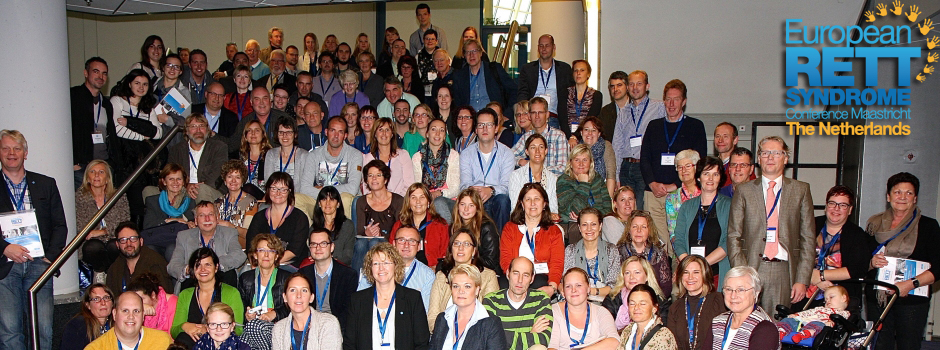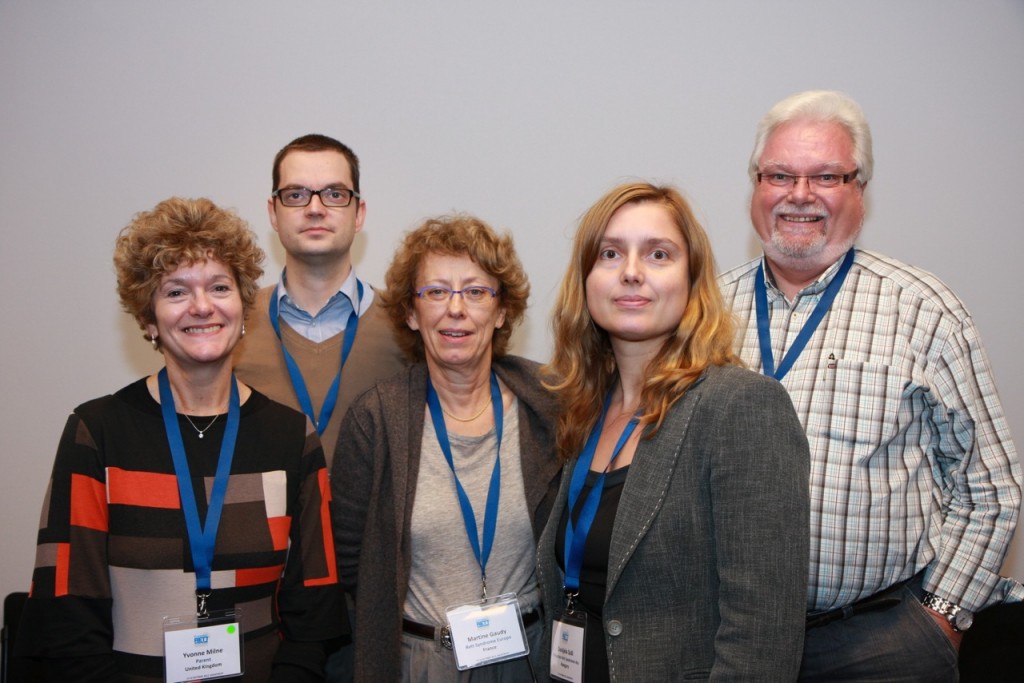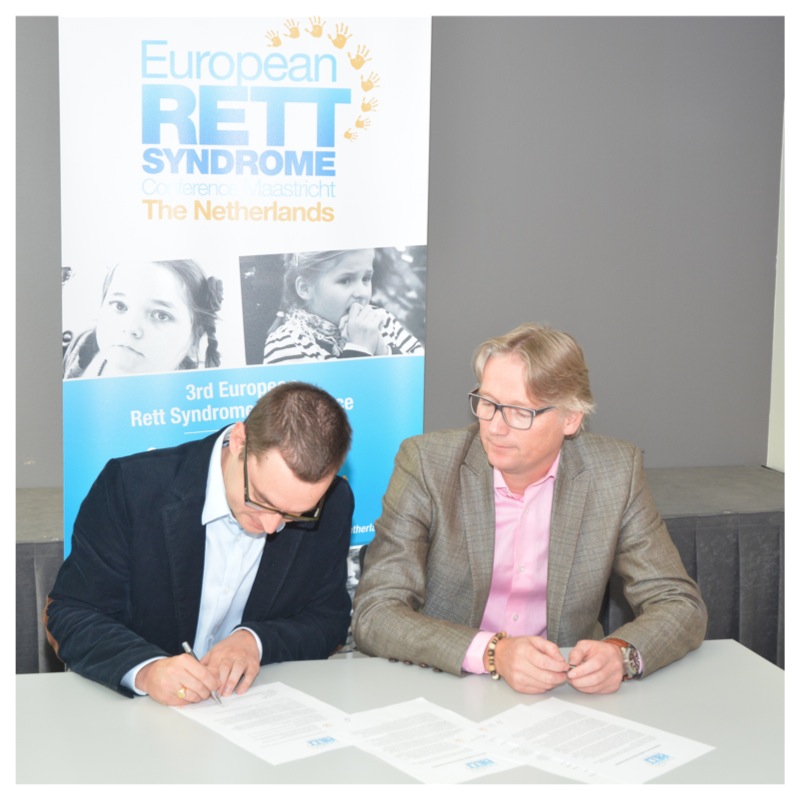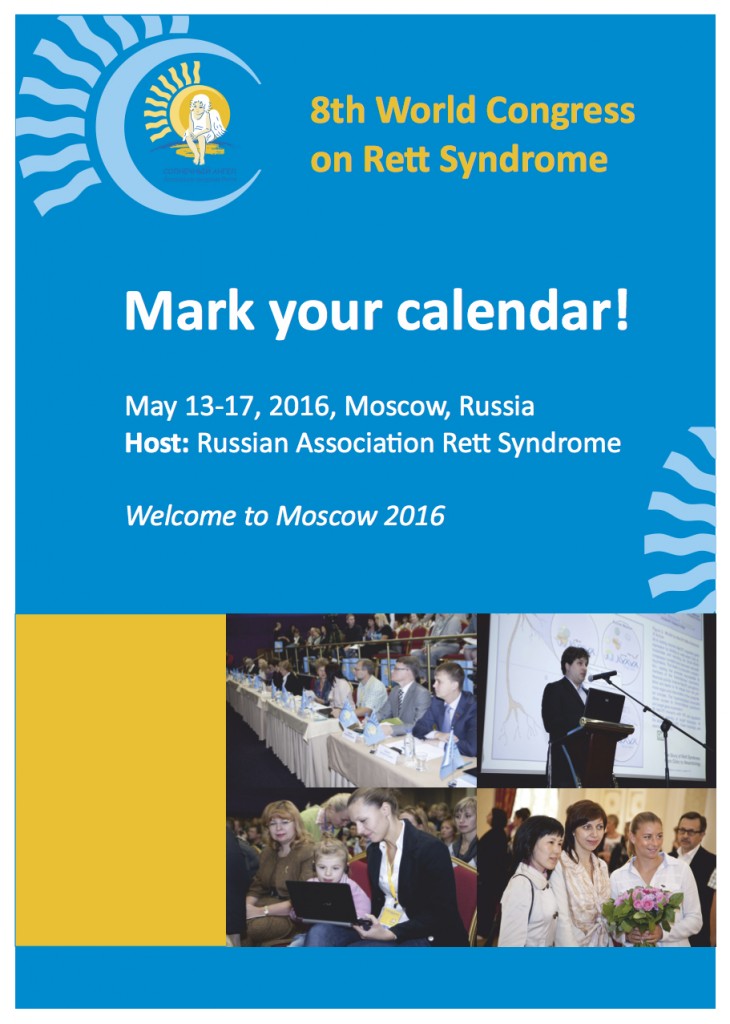By Martine Gaudy and Thomas Bertrand – Maastricht – Netherlands – 17 to 19 October 2013
After those of Milan (2009) and Edinburgh (2010), the third European Rett Syndrome Conference (ERSCM 2013) was held in Maastricht in the Netherlands.
ERSCM 2013 is an initiative of the GKC (Gouverneur Kremers Centrum), Stichting Terre (Dutch Rett Syndrome Foundation) and NRSV (Dutch Rett Syndrome Association) and was organized by the European Rett Syndrome Conference Maastricht Foundation. The conference brought together nearly 400 participants. Stichting Terre works closely with the parents’ association of the Netherlands, many of whom were present.
On the theme: “Research update and preventive management”, the conference had a strong focus on clinical issues and day-to-day care.
The full programme is available here. More pictures also available here.
Malfunctions of the brainstem have been extensively researched, with evidence of respiratory patterns and their management.
A majority of the “Basic Science” sessions were discussing the roles of potassium ions and glutamate toxicity.
Vishnu Anand Cuddapah (university of Alabama, Birmingham, USA), for instance showed that excess of [K+] ions in the extracellular lumen is normally buffered by potassium receptor Kir4.1 at the surface of astrocytes. Mecp2-deficient astrocytes, however, possess less of this receptor, which can lead to symptoms of hyper-excitability and seizures. Additionally, glutamate uptake by mutant astrocytes via another transporter GLT-1 was impaired. While GLT-1 is lacking in astrocytes, the increase of other glutamate receptors (NMDA) at the extra-synaptic area seemed linked to neuronal toxicity and was followed by using dextromethorphan (DM – a weak antagonist of the NMDA receptors) on neurons that were extracted from the roof of the nose (olfactory receptor neurons).
Sakkubai Naidu (Johns Hopkins University School of Medicine, Baltimore USA) mentioned that a placebo-controlled trial of DM was on going.
The presentations by a number of allied health professionals on the management of the disease seemed familiar to those who have attended Rett conferences in the past.
A large number of presentations on child communication with Rett children were probably the most interesting and advanced.
Marschik Peter (Institute of Physiology, University of Graz, Austria), for instance, highlighted the very early failures in the implementation stage of the language (at the tweeting and babbling level).
In terms of vision and eye-gaze, the presentation by Jose Salomao Schwartzman, University of Sao Paulo, who works with the Brazilian Association, seemed also interesting: it clearly showed – with evidence of eye-tracking devices – that Rett people were able to direct their gaze and point to parts of the face (eyes and mouth), suggesting that their decoding ability is intact, unlike autistic children.
These presentations were then linked to practical workshops where devices were presented or tested, including the well known, in a number of countries, Tobii eye-tracking devices. Their use, however, depends on a good “calibration” technique, and getting the person gradually used to using the device. However the benefit for each person is highly variable
During a dedicated session for European associations, each country had a chance to present the work of their own Rett association.
Many associations were represented, which was advantageous for the general assembly of Rett Syndrome Europe (RSE), scheduled later in the congress.
The RSE assembly received much positive feedback, which demonstrated the usefulness of having a strong European network. One of the main strengths of RSE is its membership of Eurordis and involvement in the health policy of rare diseases in Europe. At this occasion, a new RSE board was elected.
(From left to right: Yvonne Milne, Thomas Bertrand, Martine Gaudy, Danijela Szili, Wilfried Asthalter)
The congress ended with a joint statement, proposed by RSE and the organisers of the conference, relating to European policy on rare diseases. It was intended that this statement would be presented to the Directorate General for Health and Consumers Affairs of the European Commission, with the aim to support the establishment of Rett syndrome referral centres across Europe.
The next RSE general assembly will take place in Vienna in 2014. The Representative from Denmark’s RSA proposed that key people should be invited who had taken the initiative to create Rett centres in some European countries.
Finally, the next World Congress was announced, which is to be held from 13 to 17 May 2016. This will be organised by the Russian Rett Syndrome Association and will take place in Moscow.




